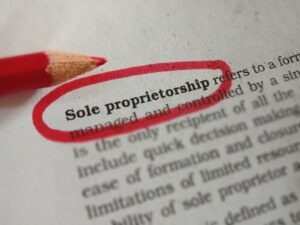Prepaid Expenses Guide: Accounting, Examples, Entries & More Explained

To mitigate these risks and pitfalls, companies should implement robust tracking systems, regularly review and adjust prepaid expense balances, and closely monitor consumption patterns and market dynamics changes. Prepaying expenses ties https://www.bookstime.com/ up funds that could be used for other investment opportunities. While these provide future benefits, there may be missed opportunities to invest the funds in more lucrative ventures or projects that could generate higher returns.
Order To Cash
If a company decides to pay for a product or service in advance, the upfront payment is recorded as a “Prepaid Expense” in the current assets section of the balance sheet. A prepaid expense is an advance payment for goods or services that are received in the future. A prepaid expense is recorded as a type of asset on the balance sheet and as an expense on the income statement when it’s utilized. This starts with determining if the amount should be expensed over multiple accounting periods, how much should be expensed each period, and for how long.
- Their open-ended nature can lead to deviations in practice that are difficult to control, raising concerns about reliability and compliance.
- For example, a Statement of Financial Position, which is a nonprofit balance sheet.
- A prepaid expenses journal entry is a vital accounting record that acknowledges an expense paid in advance.
- A prepaid expense is a financial asset that businesses pay in advance for goods or services they will receive in the future.
- Prepaid expenses are listed as current assets on the balance sheet under “”Prepaid Expenses”” or “”Prepayments.”” They represent advance payments for goods or services that will be received in the future.
- There is a risk that prepaid expenses may become obsolete or remain unutilized if the expected goods or services are not delivered or if business circumstances change.
- Without accurate adjustments, prepaid expenses can create misrepresentation on a company’s financial statements, potentially leading to regulatory non-compliance and distorted financial analysis.
When do prepaid expenses hit the income statement?
Prepaid expenses amortization is the calculation of the cost of the expense in increments. Another way to describe this is to consider what the cost of the expense would be if it was paid for in regular monthly installments instead of all at once. At the end of 12 months, the office rent expense account will appropriately show a cumulative total of $120,000 in payments for the past year, and the value in the asset account will be depleted to zero. As amortization of prepaid expenses the expense is used up, monthly incremental payments will be credited to the asset, and debited in the appropriate expense account, such as insurance expense or rent expense. In the coming twelve months, the company recognizes an expense of $2,000/month — which causes the current asset recorded on the balance sheet to decrease by $2,000 per month. Create a Basic Entry After PaymentLet’s say your insurance coverage for the entire year costs $24,000.

Other Payment Types
The full value of the prepaid expense is recorded as a debit to the asset account and as a credit to the cash account. Common examples include administrative expenses, such as rent or leases, advertising, legal retainers, estimated taxes, and other recurring expenses that can be lumped into one prepaid expense. The value of the prepaid asset is offset by what the cost of the expense would be to each of the affected reporting periods. For this reason, a business must amortize, or calculate, the monthly cost for a prepaid expense. The key to accurately accounting for amortized prepaid expenses is having accurate records and understanding how long the asset will provide value before needing to be replaced or renewed.

Both prepaid expenses and deferred expenses are important aspects of the accounting process for a business. As such, understanding the difference between the two terms is necessary to report and account for costs in the most accurate way. Prepaid expenses cannot be expensed as soon as you pay for a service or goods because your business benefits from it over a period of time. And according to GAAP (generally accepted accounting principles), when you record an expense, you must realize the benefit from the asset in the same accounting period. Additional expenses that a company might prepay for include interest and taxes.
- Since a business does not immediately reap the benefits of its purchase, both prepaid expenses and deferred expenses are recorded as assets on the balance sheet for the company until the expense is realized.
- Companies make prepayments for goods or services such as leased office equipment or insurance coverage that provide continual benefits over time.
- You may be able to set up a recurring journal entry in your accounting software that will complete this automatically.
- They may incur savings by paying for expenses up front because some providers will offer discounts for products and services when they are paid for in advance.
- Therefore, the expense is often aggregated with the “Other Current Assets” line.
- Following amortization, the prepaid expense, such as house rent, gradually decreases to zero.
- The initial journal entry for a prepaid expense does not affect a company’s financial statements.
- Prepaid expenses refer to the advance payment or prepayment of something in order to be able to use such things but an entity has not used such things yet.
- Initially, the prepaid expense is recorded as a prepayment in a current account on the company’s balance sheet.
- They enable businesses to plan and budget for future expenses by keeping the funds available until the expenses are incurred.
- At the end of the year, you will have expensed the entire $24,000, and your prepaid rent account will have a $0 balance.
This way, it will save your time as you will not need to record one by one as per the example above. Paying in advance is a smart way to make sure you won’t miss out on something important. For instance, when you rent an office, paying the rent for a month or a quarter ahead of time ensures you’ll always have that space available. Prepaid expense amortization is used in business accounting in many ways. Diluted earnings per share increased 8% to $1.05 per share and adjusted diluted earnings per share(1) increased 15% to $1.12 per share for the fourth quarter.
Rent As a Prepaid Expense
We then divide the $2,000 over the 24 months of the subscription term to arrive at a monthly subscription cost of $83.33, to be recognized on the income statement each month the subscription is utilized. Concurrently, we are also amortizing both the long-term and short-term balances of the prepaid subscription. When we have the right to receive services or assets over an agreed-upon term and we prepaid for the right, the prepaid asset is not derecognized all at one time as with other prepaid expenses. Rather, under GAAP accounting, it should be gradually and systematically amortized over the term of the agreement. Sticking with the accrual method of accounting, a second important consideration when recording a prepaid asset is the utilization period. If the entirety of the prepaid asset is to be consumed within 12 months, then it is deemed a current asset.

